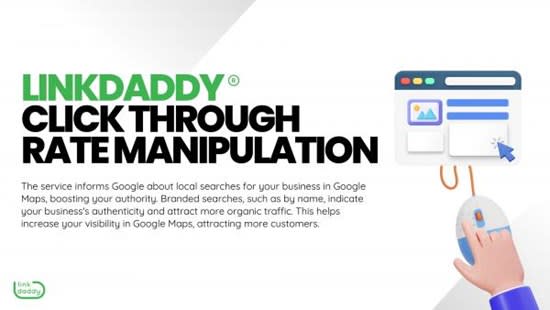The Ultimate Overview to CTR Manipulation: Approaches for Improving Internet Search Engine Exposure
In the ever-evolving landscape of search engine optimization, grasping the art of click-through price (CTR) adjustment has ended up being progressively important for companies striving to boost their online presence. As search engines proceed to prioritize customer interaction metrics, understanding just how to strategically affect CTR can substantially impact an internet site's performance in search outcomes.
Comprehending CTR and Its Impact

A high CTR suggests that a significant portion of users locate the web link compelling and pertinent, which can bring about enhanced rankings on online search engine. On the other hand, a low CTR might signify that the link is not resonating with customers, possibly leading to a drop in positions. Comprehending CTR trends and patterns can provide beneficial understandings into user actions, preferences, and the performance of various advertising strategies.
Fundamentally, monitoring and assessing CTR data is crucial for enhancing search engine presence and developing efficient digital advertising projects (ctr manipulation press release). By leveraging this metric, companies can adjust their techniques to bring in even more clicks, improve individual involvement, and eventually enhance their on the internet visibility
Optimizing Meta Labels for Greater Click-Through Fees
With an eager focus on enhancing internet search engine visibility with calculated optimization techniques, one pivotal aspect hinges on the meticulous crafting of meta tags to raise click-through prices effectively. Meta tags, including the meta title and meta description, play a critical role in shaping exactly how a web site shows up in internet search engine results. Optimizing these tags involves incorporating appropriate key phrases that properly mirror the web content of the page while additionally appealing to users' search intent.
To optimize meta tags for higher click-through prices, it is important to keep them concise, compelling, and straightened with the web content on the web page. The meta title need to be eye-catching, plainly suggesting the page's topic and value proposition. Meanwhile, the meta description works as a quick recap that lures individuals to click through by offering a glimpse of what they can anticipate on the web page. Additionally, incorporating one-of-a-kind marketing points, calls to activity, or special deals within the meta summary can even more enhance its allure and motivate clicks. By thoroughly crafting meta tags, websites can raise their exposure in search results page and bring in more natural website traffic.
Crafting Compelling Title Tags and Meta Descriptions
.svg)
When crafting title tags and meta descriptions, it is necessary to remember the individual's intent and ensure that the language made use of is engaging and pertinent to their search question. By optimizing these components, sites can boost their click-through rates and ultimately boost their search engine visibility. Furthermore, consistently keeping track of and testing various variants of title tags and meta summaries can assist determine which ones are most reliable in driving traffic to the website.
Leveraging Schema Markup for Boosted Exposure
To improve an internet site's exposure and enhance its efficiency in online search engine results, leveraging schema markup can be a critical and effective technique. Schema markup is a type of microdata that can be added to a page's HTML to provide internet search engine with more comprehensive information regarding the material on that particular web page. By incorporating schema markup, sites can improve the means their listings show up in search engine results, making them much more helpful and aesthetically enticing to customers.
One substantial benefit of using schema markup is that it can raise the likelihood of abundant snippets being shown together with a web site's search results page. Rich snippets are added pieces of info, such as celebrity scores, product prices, or occasion days, that can make a listing stick out and draw in even more clicks from users. This not only improves the visibility of a website but also boosts its reputation and importance in the eyes of search engines.
Monitoring and Evaluating CTR Performance
Having developed the advantages of i was reading this leveraging schema markup for improved visibility in search engine results, the next crucial action entails monitoring and evaluating the performance of click-through prices (CTR) By tracking CTR metrics, web site owners can gain beneficial understandings into how customers engage with their online search engine listings. Various devices, such as Google Analytics and Browse Console, offer detailed CTR information that can be evaluated to understand which keywords, meta summaries, or titles are driving the most traffic.
Monitoring CTR efficiency allows internet site owners to recognize underperforming web pages or listings that may need optimization. It also aids in evaluating the effectiveness of any type of CTR manipulation techniques applied. Consistently keeping an eye on CTR trends can highlight changes in user habits, allowing for timely changes to enhance internet search engine visibility.
Furthermore, examining CTR information along with various other metrics, such as bounce price and time on page, can give an extensive understanding of individual engagement. This alternative strategy enables web site owners to make educated choices to improve their overall online search engine visibility and individual experience.

Final Thought
To conclude, understanding and manipulating CTR can considerably affect online search engine exposure. By maximizing meta tags, crafting engaging titles and check summaries, leveraging schema markup, and keeping an eye on performance, services can enhance their on the internet presence. It is crucial to continuously analyze CTR information to determine patterns and make notified decisions to drive traffic and rise exposure in search engine results pages. Inevitably, implementing these approaches can result in an extra successful on the internet presence and boosted online search engine positions.
In the ever-evolving landscape of search engine optimization, grasping the art of click-through price (CTR) control has actually become increasingly vital for businesses aiming to boost their online exposure. As search engines proceed to focus on user interaction metrics, recognizing how to tactically affect CTR can significantly affect a web site's efficiency More Help in search results. In the realm of search engine optimization (SEO), CTR plays a considerable duty in determining the efficiency of an internet site's visibility on search engine results pages (SERPs)
Having established the advantages of leveraging schema markup for boosted presence in search engine results, the next essential step includes surveillance and evaluating the performance of click-through rates (CTR) Frequently monitoring CTR trends can highlight fluctuations in user behavior, allowing for timely adjustments to improve search engine visibility. (ctr manipulation service)